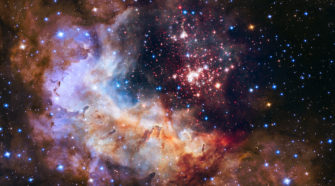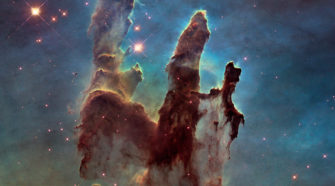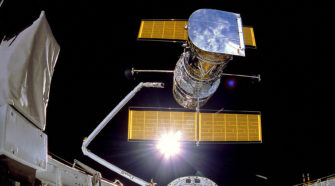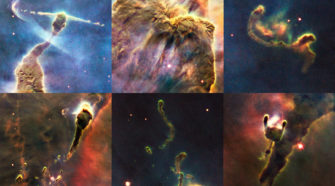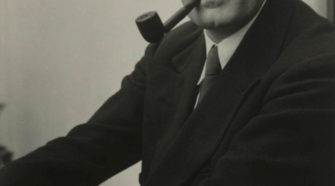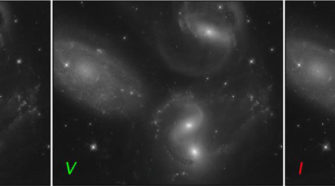Issue #11 (April 2015)
Celestial fireworks mark Hubble’s 25th
The brilliant tapestry of young stars flaring to life resemble a glittering fireworks display in the 25th anniversary Hubble Space Telescope image, released to commemorate a quarter century of exploring the solar system and beyond. “Hubble has completely transformed our view of the universe, revealing the true beauty and richness of the cosmos” said John …
Hubble’s Top 100 images
During its 25 years of peering out at the farthest depths of the Universe, the Hubble Space Telescope has enabled humanity to witness countless amazing sites from here on Earth. Here we present the Hubble Top 100 list. It has been compiled, and is regularly reviewed, by staff of ESA/Hubble. A couple of quick notes …
Hubble Space Telescope: Showing humanity the Universe for 25 years
Since launching in 1990, the Hubble Space Telescope (HST) has awed and inspired the public with a dazzling array of images. More than just pretty pictures, Hubble has collected 25 years of data, providing unprecedented views and insights into the universe. By observing objects from neighboring planets to the most distant galaxies, Hubble has captured …
Hubble’s greatest discoveries
During its 25 year long mission the Hubble Space Telescope has changed our view of the Universe significantly. Some of the most ground-breaking discoveries made in astronomy in the 20th century were made by Hubble, which allows astronomers to better understand the world we live in and investigate its mysteries even further. The Hubble Deep …
Edwin P. Hubble: The man behind the name
When talking about the Hubble Space Telescope one man is often forgotten: That man who gave the space telescope its name: Edwin Powell Hubble. Today, most astronomers see him as the most important observational cosmologist in the 20th century and he played a crucial role in establishing the field of extragalactic astronomy. As a result …
How they do it: Processing Hubble images from B&W into stunning full-color
Everyone has seen the dramatic images produced by the Hubble Telescope from the iconic Pillars of Creation to the hundreds of galaxies in one shot, but how are these images created? The Hubble Telescope captures images in monochrome, just like the old black and white photographs with no color, but the images we see are …

